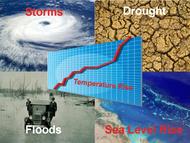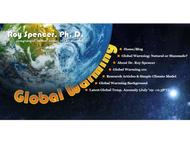First they came for the socialists, and I did not speak out—because I was not a socialist.
Then they came for the trade unionists, and I did not speak out— because I was not a trade unionist.
Then they came for the Jews, and I did not speak out—because I was not a Jew.
Then they came for me—and there was no one left to speak for me.
Martin Niemöller
First they came for nuclear and I did not speak out, because it was a competitor.
Then they came for oil and I did not speak out, because it was a competitor.
Then they came for coal and I did not speak out, because it was a competitor.
Then they came for me – and there was no one left to speak for me.
Environmental activists have waged war on the US energy industry in the press and in the courts for decades but lacked the power to inflict major damage. They have since allied themselves with the political left, which has provided them with access to power and funds they lacked previously. This alliance has also enhanced their access to the media, which have provided ample exposure and support for their efforts.
The US nuclear industry has been faced with organized resistance to new power plant siting, resistance to existing power plant life extension programs and demands for premature plant closures. This resistance has been loosely tied to environmental concerns, though not with climate change, because nuclear generation is the only reliable, dispatchable generation technology which emits no CO2 or other “Green House Gasses (GHGs)”.
The alliance with the political left then led to the 2009 US EPA Endangerment Finding regarding motor fuels (oil distillates) and to massive government subsidies for electric vehicles. The Endangerment Finding was based on projected environmental damage estimates produced by unverified climate models, run with uncertain climate sensitivity, forcing and feedback estimates and extreme Representative Concentration Pathways. These models and their uncertain inputs are suitable for generation of scary scenarios, but not as the basis for public policy. This Endangerment Finding is now under review for possible revision or withdrawal.
Success with the Endangerment Finding then led to the EPA Clean Power Plan, intended to require premature closure of existing coal generators and require the application of carbon capture and sequestration technologies, which have not been commercially demonstrated and appear uneconomical, to any new coal generating stations. This Clean Power Plan is being replaced by a far more flexible Affordable Clean Energy Rule.
Environmental activists and state government entities are also resisting coal industry efforts to increase the capacity of US coal export facilities. These facilities could partially offset the loss of domestic markets with export sales to developing nations which are currently unconstrained in expanding their use of coal for power generation. The stated intent is to eventually shut down the US coal industry.
The environmental attacks on nuclear and coal generation, in combination with advanced natural gas combined cycle generating technology and dramatically increased availability and reduced prices of natural gas as the result of hydraulic fracturing has caused the electric utility industry to move towards natural gas as their generating fuel of choice. This shift to natural gas generation has been the primary factor in the impressive US reductions in CO2 emissions, since natural gas combustion results in half the CO2 emissions of coal combustion and the combined cycle generators are also approximately twice as efficient as coal generators. Massive subsidies for wind and solar have been far less effective in reducing CO2 emissions.
Environmental activists have also worked with the political left and the media to prevent or delay construction of new and expanded oil and gas pipeline capacity to connect new and expanded production fields to new and growing markets. The delay or denial of oil pipelines has forced incremental oil supplies to be moved to market by rail, resulting in both higher transportation costs and increased environmental risk. The delay or denial of new natural gas pipelines has impeded the electric generating industry in its efforts to site new natural gas combined cycle generating facilities because of constrained delivery capacity.
More recently, these delivery constraints are also forcing natural gas utilities to halt new customer service connections to protect supplies for existing customers. The State of New York has recently denied necessary permits for two natural gas pipelines, one intended to increase delivery capacity to upstate New York and New England and the other intended to increase delivery capacity to Brooklyn, Queens and Long Island. Both actions have caused the serving natural gas utilities to halt new customer connections. Ironically, the Governor of New York has asked the New York State Public Service Commission to investigate the utility decisions to halt new connections. The New York State ban on hydraulic fracturing has also dramatically constrained in-state natural gas production.
Most historic US natural gas utilities have been acquired by or merged into electric utilities, forming or expanding existing combination utilities, effectively converting inter-company competition to intra-company competition, which ultimately devolves to market allocation for convenience. This is particularly true as constrained pipeline capacity has tightened competition for available pipeline capacity between the utility generating unit and the gas distribution unit. Since generation typically represents 70-80% of combination utility assets, generation typically has priority on available supply.
The electric utility industry has been aggressively marketing and lobbying for an all-electric economy for decades. They have been aided and abetted in these efforts by US Department of Energy Appliance Efficiency Standards and site-based building energy efficiency standards, both of which largely ignore the inefficiencies of the electric power generation, transmission and distribution systems and their higher environmental emissions.
The electric industry has found a new ally in municipal bans on new natural gas connections, imposed in the alleged interest of avoiding increased climate change. Berkeley, California has imposed such a ban, effective beginning in January 2020. The City of Seattle, Washington is also considering such a ban. Other cities will likely follow suit, particularly in California, Oregon and Washington, at least initially.
These bans, as well as suspensions of new connections as the result of government-imposed supply constraints deprive new residents and commercial businesses of fuel choice for heating, water heating, cooking, laundry drying and other competitive energy end uses. They also prohibit the installation of automatic standby generators, which will become progressively more necessary as reliable, dispatchable generating systems are increasingly replaced by intermittent and non-dispatchable generators, such as wind and solar.
The ultimate intent of the environmental activists and the political left are to move the US toward an all-electric energy supply system, powered by “clean energy” such as wind and solar, supported by battery or other energy storage systems. This approach is questionable from a national security standpoint, since many of the materials required for the construction of the wind and solar generators are controlled by China.
The estimated $30 trillion investment required to achieve this transition and the resulting higher energy costs for the US economy appear to be of little real concern to its advocates. The unsuitability of the resulting energy supply system for process industries, iron and steel production and cement production also appear to be of little concern. One advocate recently suggested that perhaps certain types of production might not be able to be conducted here, even though relocating them to nations with weaker environmental rules would make no difference regarding their contributions to anthropogenic climate change.
The electric utility industry has apparently decided to pursue appeasement of the environmental activists and the political left and, as Winston Churchill suggested, “feed the alligator in the hope that it will eat you last”. The recent fascination of the political left in the US with nationalization of industries suggests that the alligator’s meal might not long be delayed.
 The Right Insight is looking for writers who are qualified in our content areas. Learn More...
The Right Insight is looking for writers who are qualified in our content areas. Learn More...











